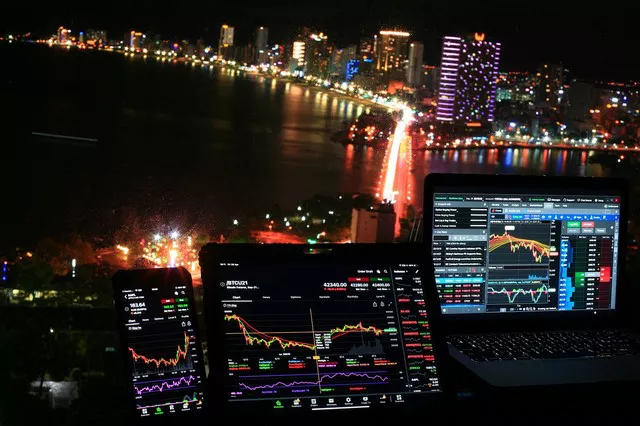Futures trading is an exciting and potentially lucrative investment strategy that allows traders to speculate on the future price movements of various assets. One popular platform for futures trading is thinkorswim, a feature-rich trading platform offered by TD Ameritrade. In this step-by-step guide, we will explore the key features of thinkorswim and provide you with a comprehensive overview of how to engage in futures trading effectively. By the end of this article, you’ll have the knowledge and tools to confidently navigate the world of futures trading on thinkorswim.
Getting Started with thinkorswim
Before you can start trading futures on thinkorswim, there are a few steps you need to follow to set up your account and install the platform.
Account Setup:
The first step is to open an account with TD Ameritrade. Make sure you meet the requirements and eligibility criteria and choose the appropriate account type based on your needs. Once you’ve opened your account, you’ll need to fund it to start trading.
Installing thinkorswim Platform:
To access thinkorswim, you’ll need to download and install the platform on your computer. This process is straightforward and can be completed within minutes. Once installed, you can log into the platform using your TD Ameritrade account credentials.
Navigating the thinkorswim Platform:
Once you’re logged in, it’s essential to familiarize yourself with the platform’s interface. The main components include the watchlist, charts, and order entry tools. You can customize the layout according to your preferences and add futures contracts to your watchlist for easy monitoring.
Understanding Futures Trading Basics
Now that you’re set up on thinkorswim, it’s crucial to understand the basics of futures trading before diving into the market.
What are Futures Contracts?
Futures contracts are agreements to buy or sell an asset at a predetermined price on a future date. It’s essential to grasp key terminology such as contract size, tick value, expiration dates, and margin requirements to trade futures successfully.
Types of Futures Contracts:
Futures contracts cover various asset classes. Commodities futures include energy, agricultural, and metal futures, while financial futures encompass equity indexes, interest rates, and currencies.
Fundamental Analysis for Futures Trading:
Understanding economic indicators and supply and demand factors is crucial for successful futures trading. Keep an eye on factors like GDP growth, inflation rates, employment data, weather conditions, production levels, and political events.
Technical Analysis Tools in thinkorswim
Technical analysis plays a significant role in futures trading. Thinkorswim offers a range of tools to help you analyze price charts and identify potential trading opportunities.
Charting Features:
Learn about different chart types like line charts, candlestick charts, and bar charts. You can select the appropriate timeframe and interval and add technical indicators to your charts.
Applying Technical Indicators:
Explore trend-following indicators like moving averages, Bollinger Bands, and Ichimoku Cloud. Additionally, oscillators like the Relative Strength Index (RSI), Stochastic Oscillator, and Moving Average Convergence Divergence (MACD) can provide valuable insights.
Using Drawing Tools:
Drawing tools like trendlines, horizontal support/resistance lines, and Fibonacci retracements help identify important levels on the price chart. Recognizing chart patterns such as head and shoulders, double top/bottom, and cup and handle can also enhance your trading decisions.
Executing Futures Trades on thinkorswim
With a solid understanding of technical analysis, it’s time to execute trades on thinkorswim.
Placing Orders:
Thinkorswim offers various order types, including market orders, limit orders, stop orders, and stop-limit orders. Understanding each order type and when to use them is crucial for effective trade execution.
Managing Positions:
Once you have open positions, it’s essential to monitor them closely. Set profit targets and stop-loss orders to manage risk effectively. You can also adjust your positions by scaling in or out, adding to winners, and cutting losers. Be aware of rolling over expiring contracts if necessary.
Risk Management and Trade Psychology
Successful futures trading requires proper risk management and a disciplined mindset.
Calculating Risk-Reward Ratio:
Determining your risk per trade and setting profit targets based on the risk-reward ratio is fundamental for managing your trading capital effectively.
Managing Emotions and Discipline:
Emotional control and discipline are vital elements of successful trading. Overcoming fear and greed, following your trading plan, and maintaining discipline during losing streaks will contribute to long-term success.
Conclusion
In this comprehensive guide, we’ve covered the step-by-step process of futures trading on thinkorswim. From setting up your account and installing the platform to executing trades and managing positions, we’ve provided a comprehensive overview of futures trading on thinkorswim. By following the outlined steps and utilizing the tools and features available on the platform, you can enhance your trading skills and make informed decisions in the futures market.


